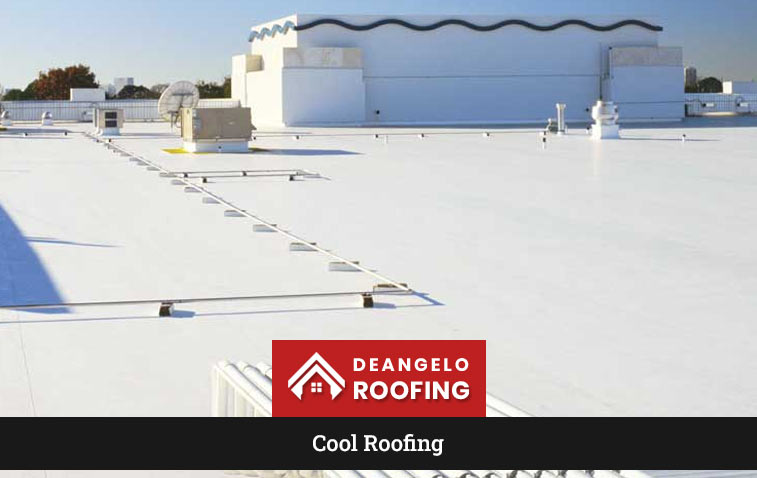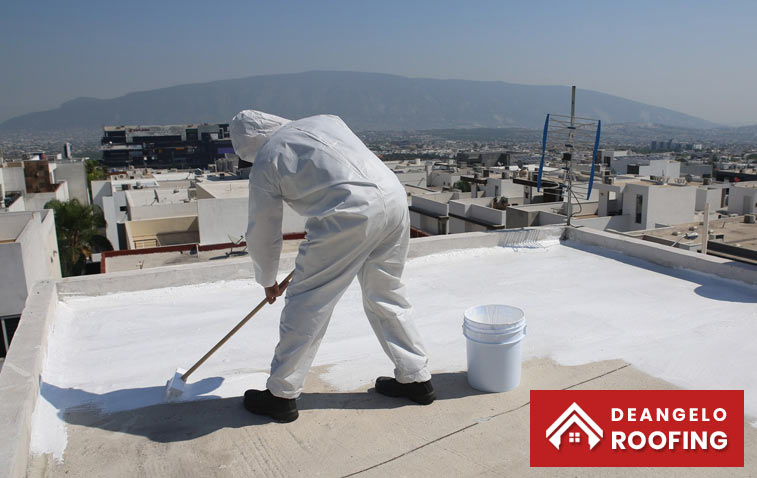Cool Roofing: Enhancing Energy Efficiency and Comfort
Cool roofing is a cutting-edge solution designed to reflect more sunlight and absorb less heat than standard roofing materials. This technology enhances energy efficiency by lowering building temperatures and reducing cooling costs. In Los Angeles, where high temperatures are common, cool roofing offers significant benefits, including reduced energy expenses, improved comfort, and a positive impact on the environment.

Benefits of Cool Roofing
Cool roofing provides numerous advantages for buildings in Los Angeles, enhancing both energy efficiency and comfort.
Energy savings
Cool roofs reflect more sunlight and emit absorbed heat, leading to significant reductions in cooling costs. This enhances energy efficiency, lowers utility bills, and eases the burden on HVAC systems, which can also lead to reduced maintenance needs.
Environmental benefits
IBeyond individual savings, cool roofing contributes to environmental health. By mitigating the urban heat island effect, cool roofs help lower city temperatures, improve air quality, and lessen the impact of heat waves on public health.
Extended roof life
Cool roofing materials reduce thermal stress and shield roofs from harmful UV radiation, which can prolong their lifespan. This reduces the frequency of repairs and replacements, offering long-term durability.
Improved occupant comfort
Cool roofs enhance indoor comfort by minimizing heat transfer. This results in cooler indoor temperatures, creating a more pleasant and productive environment, especially important during Los Angeles’ hot weather.
Materials Used in Cool Roofing
Cool roofing materials come in several forms, each offering distinct benefits. Here are the most common types:
Coatings
Cool roof coatings are applied directly to existing roofs to create a reflective layer that minimizes heat absorption. Common types include acrylic, silicone, and polyurethane coatings. These coatings are versatile, working well on various roof types such as metal, asphalt, and single-ply membranes.
Membranes
Installers place cool roof membranes as single-ply sheets over the roof deck, forming a seamless, reflective surface. Typical materials include thermoplastic polyolefin (TPO), polyvinyl chloride (PVC), and ethylene propylene diene monomer (EPDM). People value these membranes for their durability, flexibility, and resistance to UV radiation.
Tiles and Shingles
Cool roof tiles and shingles combine traditional aesthetics with enhanced solar reflectance. Available in materials like clay, concrete, and asphalt, they offer improved thermal emittance while maintaining the look of conventional roofing. These products are especially suitable for residential and historic buildings where appearance matters.
Step-by-Step Installation of Cool Roofing
The installation process for cool roofing varies depending on the type of material being used and the specific requirements of the building. However, the general steps involved in installing a cool roof can be summarized as follows:
| Step | Description | Details |
| Roof Evaluation | Assess the current roof condition | Inspect the existing roof for damage, integrity, and suitability for a cool roof overlay. |
| Choose Materials | Select appropriate cool roofing materials | Decide between options like reflective paint, modified bitumen, or single-ply membranes based on your roof type and climate. |
| Gather Supplies | Obtain necessary tools and safety gear | Ensure all materials, including brushes, rollers, adhesives, and safety equipment (e.g., harnesses, gloves), are ready. |
| Prepare the Roof | Clean and repair the existing roof | Remove debris, clean surfaces thoroughly, and repair any damages to ensure a smooth application process. |
| Apply Cool Roof Coating | Coat the roof with the selected material | Apply the reflective coating or install the membrane uniformly across the roof surface. Follow manufacturer guidelines for best results. |
| Final Inspection | Conduct a thorough inspection | After installation, inspect the roof to ensure it is evenly covered and free from imperfections. |
| Maintenance Planning | Plan for regular maintenance | Set up a schedule for periodic inspections and maintenance to prolong the roof’s life and efficiency. |
Maintenance and Care of Cool Roofs
Regular care and attention can help extend the lifespan of cool roofs. They are designed to be low-maintenance and maintain their energy-saving properties.Some key maintenance tasks for cool roofs include:
Regular inspections
Building owners should schedule annual inspections of their cool roofs to identify any signs of damage, wear, or deterioration. These inspections prevent minor issues from becoming major problems, saving time and money.
Cleaning and debris removal
Over time, cool roofs can accumulate dirt, dust, and debris, which can reduce their reflectivity and energy efficiency. Regular cleaning prevents damage from clogged drains or standing water, maintaining roof performance.
Repairs and replacements
During an inspection, promptly address any identified damage or deterioration to prevent further harm to the roof and the building. In some cases, this involves patching or repairing small sections of the roof. In more severe instances, it may require replacing the entire cool roofing system.
Conclusion
Cool roofing offers significant benefits for buildings in Los Angeles, enhancing energy efficiency, sustainability, and resilience. By reducing heat absorption and improving thermal performance, cool roofs lower energy costs, boost occupant comfort, and mitigate the urban heat island effect. As cool roofing technology evolves, it proves to be a strategic investment in the future of Los Angeles’ construction landscape.
At Deangelo Roofing, we specialize in installing high-quality cool roofs that reflect sunlight and enhance energy savings. Our expert team employs advanced materials and techniques to provide durable, sustainable solutions tailored to your needs. Trust us to deliver exceptional results and contribute to a more comfortable, eco-friendly environment.

